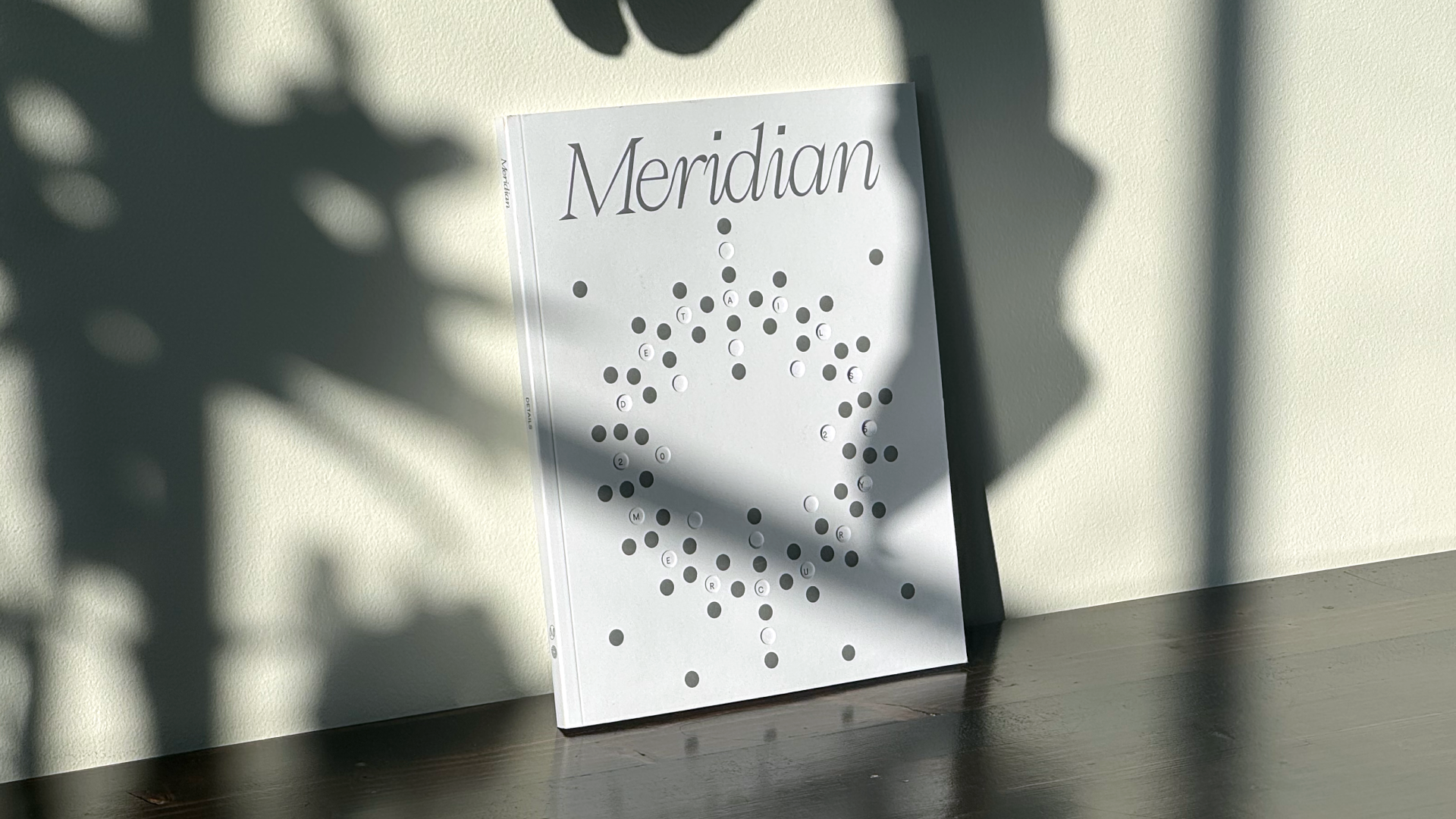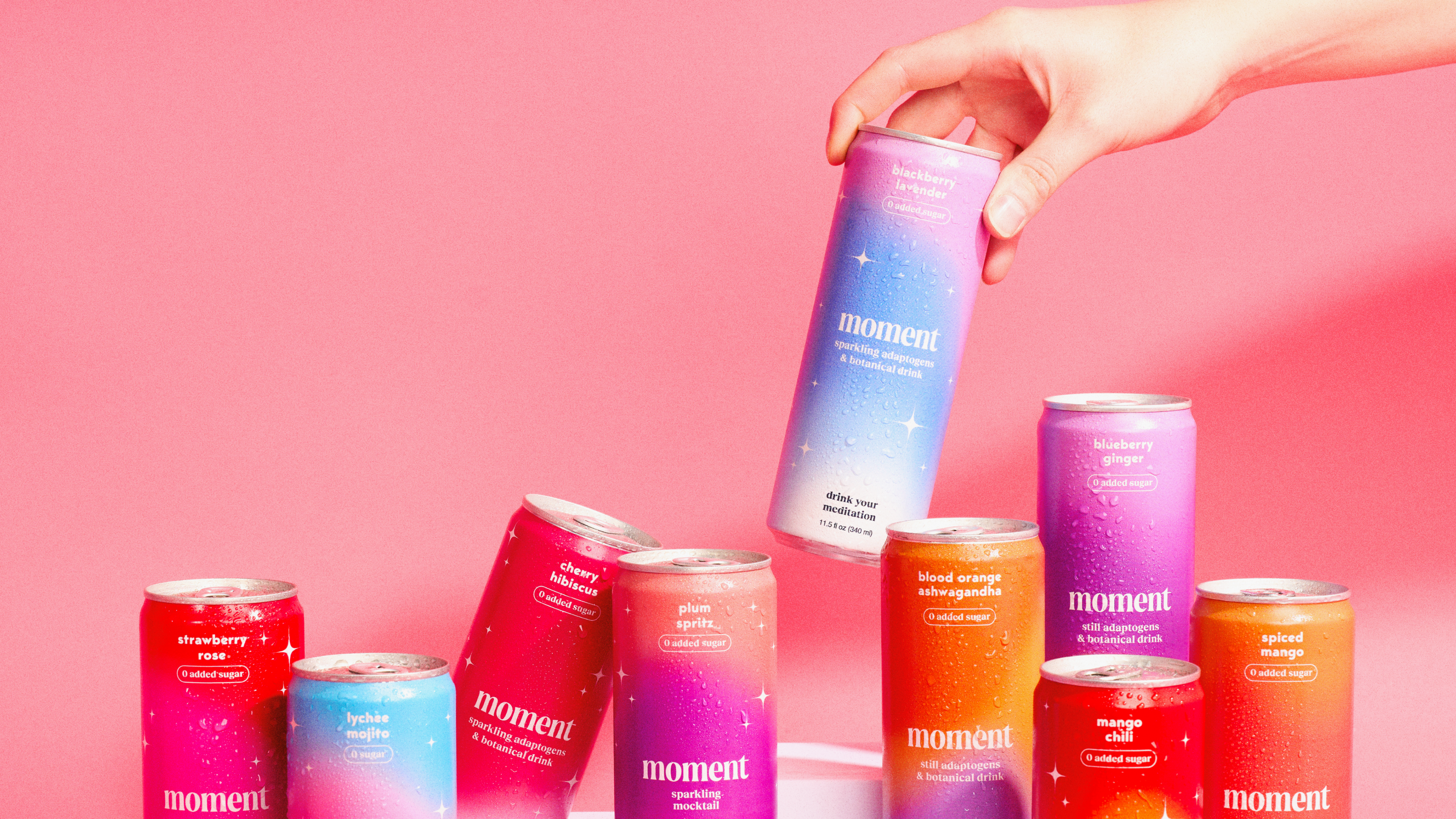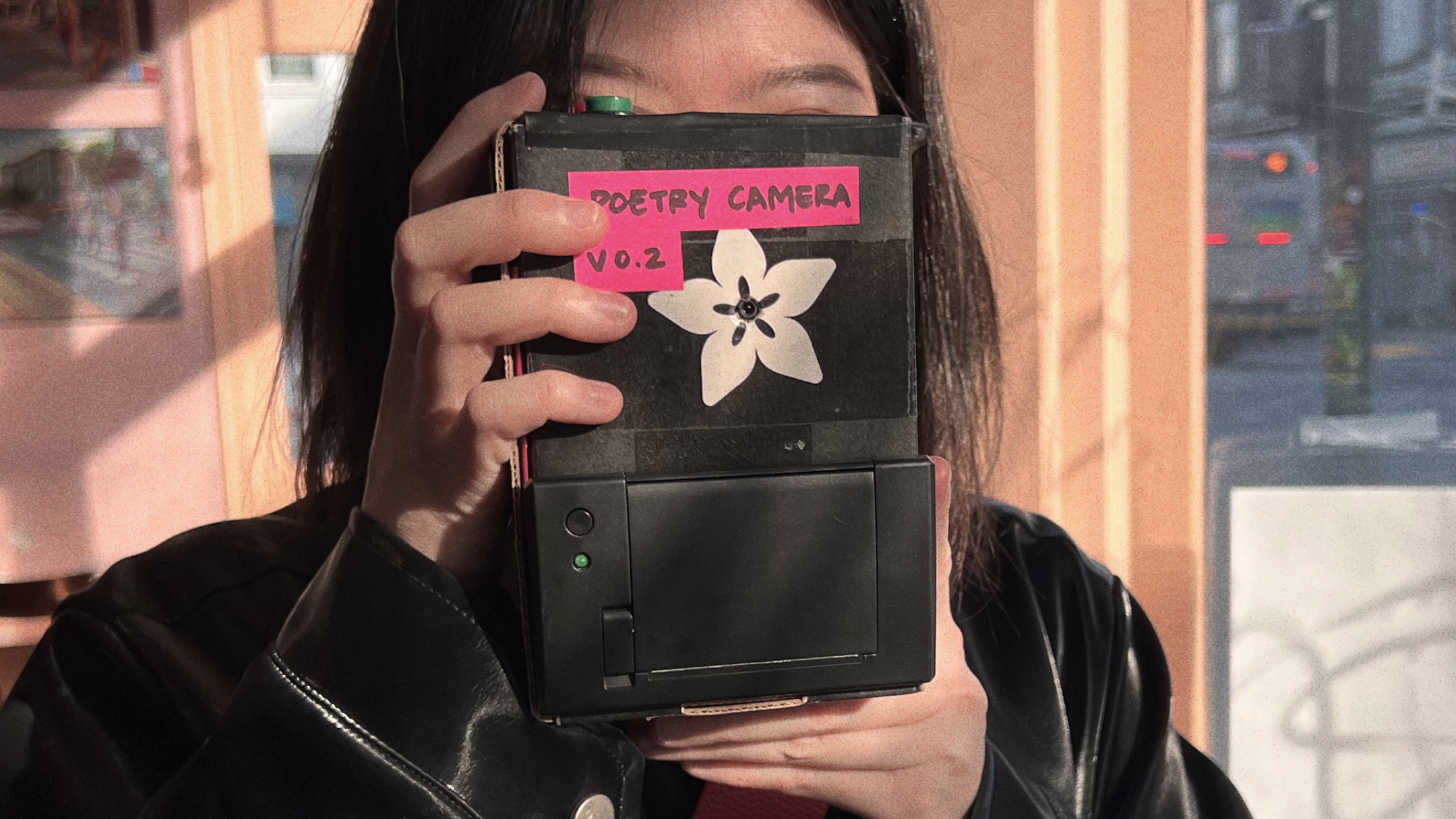Memory Bank: Aisha Chottani of Moment

Tamara Rahoumi is a writer and content strategist working at the intersection of finance, tech, and startups.
Aisha Chottani is the founder and CEO of Moment, a line of botanical beverages designed to support calm and clarity. In the early days of building the brand, she had a vivid vision for what it could be. But as investor feedback started coming in, she had to figure out how to stay true to that vision while evolving the brand and product into something that could thrive on a wider scale.
These are Chottani’s words, as told to the Mercury team. Content has been lightly edited for clarity and brevity.
Moment started from an incredibly personal place.
I’d just left the chaotic world of consulting and was trying to build something that felt aligned with a more intentional pace. I was learning about adaptogens and natural nootropics — ingredients like ashwagandha and L-theanine that can help support calm and mental clarity — and incorporating them into my own routine.
Coming out of the corporate world, I noticed how many of the drinks we reach for are tied to doing more: coffee to power through the morning, energy drinks for late nights, even alcohol as a way to “unwind” before getting back to the grind the next day. Everything felt wired into productivity somehow. But I didn’t want another drink that pushed me to keep going. I wanted one that gave me permission to slow down — and feel good doing it.
That’s where the idea for Moment came from. I wasn’t interested in creating just another “functional drink.” I wanted to create something that felt like a ritual; a slight pause in the middle of the day.
Prefer to turn real pages? We've got just the thing for you.

The recipes were essential from the start. I was building each flavor to evoke a specific feeling, layering botanicals and adaptogens in ways that felt both grounding and uplifting. I was also being incredibly intentional about the ingredients that went into each combination. Rooibos, for example, was one of the first ingredients. It’s this calming red bush tea from South Africa. My husband is South African — we met there — so the ingredient meant something to me personally. But it also made sense for the product. It was gentle, complex, and rooted in calm.
We thought about everything that way, from the ingredients to the visual design. The original can designs were inspired by nature: sunsets, rainbows, soft light. We placed the logo at the bottom on purpose. We wanted the design to breathe. The product was about presence and beauty, and the branding didn’t need to shout.
I really loved those early cans. They felt so true to our purpose.
And then we started reaching out to investors.
I think that’s the thing about feedback. You can hear it, but until you believe it, you’re not going to act on it.
I was really excited about what we were building and was eager to share it. At best, we’d start securing capital, and even if not, we might at least get some early reactions. And I was never shy about getting feedback. So I was aggressively reaching out — I probably emailed 500 investors in a matter of three weeks.
We heard a lot of no’s.
But the good thing was that people responded. I’d say 75, maybe 80 percent of the investors I reached out to actually replied, and a lot of them gave thoughtful feedback. Some of it was easy to apply right away. Other parts took longer to land.
I think that’s the thing about feedback. You can hear it, but until you believe it, you’re not going to act on it. The hardest feedback is that which makes sense logically but feels like it goes against something you believe in deeply — something you were proud of or that felt like it was core to your brand.
In our case, one example was the can design. Like I said, we had put the logo at the bottom, intentionally. The can was meant to be this beautiful canvas — something that reminded you of natural elements, and made you feel something. The logo felt secondary. But we kept hearing from investors that we had to move it to the center. “No one knows what Moment is,” and “the shelf presence just isn’t strong enough.”
At first, I didn’t want to hear it. But then I kept hearing it. Eventually, I reframed it in my mind. Making the change didn’t have to mean abandoning the vision — it could just mean that our vision would reach more people.
So, the logo moved to the middle. We kept the gradients, the nature-inspired palette, and the softness of the brand. But we made it easier to spot on the shelf.

That same balance showed up in the recipes, too.
The first few drinks we made were definitely more niche. They were a little bitter, and the ingredients weren’t always “familiar.” I remember the first investor we pitched to immediately saying, “No one knows what rooibos is.”
This was really eye-opening for me. Sure, rooibos isn’t as mainstream as “mango” or “strawberry,” in the U.S., but it’s certainly not obscure. Still, the feedback hinted at the possibility that we might be limiting our appeal by not leading with more mainstream ingredients that could make our product more widely accessible.
And sometimes that’s the hard truth. You can believe in something, or it might be personal to you, but it might not be the easiest entry point for a new customer. So we made some shifts.
We still use the original ingredients: rooibos, ginseng, chaga, tulsi. But we lead with the more familiar ones: blood orange, cherry, blackberry. We give people something they recognize and that feels approachable. And then we take them on a journey. As they get to know the brand — through our website, social media, ambassador programs — we start sharing more about the ingredients: where they come from, how they support wellness, and why we chose them in the first place.
If we hadn’t adapted, I still think we would have found our people.. But our goal — to develop a ritual of calmness that anyone could reach for — was big, and meant ensuring we were embracing everyone, not just a specific audience that “gets it.”
The Moment we’ve built today is still our vision, just slightly edited.
Making the change didn’t have to mean abandoning the vision — it could just mean that our vision would reach more people.
That’s always the balance of building, I think. You want to stay rooted in your original vision, but you also want to create something that people can access and connect with. You have to protect the core of what makes you special, while staying open to what others might see more clearly than you.
The early days of Moment taught me how to listen, how to shift, and how to preserve the soul of what we were building, even as we adapted the way we presented it to the world.
We still obsess over our ingredients. We still source them thoughtfully from around the world — rooibos from South Africa, hibiscus from Egypt, and others that are selected not just for function, but for the feeling they create when you take a sip. We still think about how the product makes you feel — emotionally, mentally, and physically.
And we still want it to be beautiful. Calm. Intentional.
So yes, things have changed. But the core is still there. It’s still personal, but it’s clearer now. A bit stronger and more refined, maybe, but still very much us.
About the author
Tamara Rahoumi is a writer and content strategist working at the intersection of finance, tech, and startups. Guided by curiosity, she's drawn to the human stories behind what's being built and enjoys the creative challenge of turning ordinary or technical topics into engaging, unexpected content experiences.



